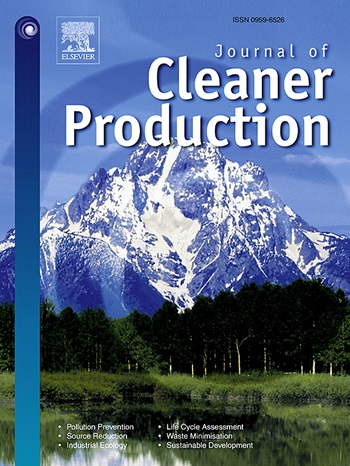CirDEF: Standardised information framework to address the information needs of circularity indicators
IF 9.7
1区 环境科学与生态学
Q1 ENGINEERING, ENVIRONMENTAL
引用次数: 0
Abstract
Circularity indicators are widely used to assess progress toward sustainability through circular economic practices. However, the diverse data requirements for these indicators often result in inconsistencies, overlaps and misinterpretations when evaluating circularity. This study addresses the absence of a unified, standardised approach to defining and applying circularity indicators, by developing a framework, named “CirDEF”. This standardised and holistic information framework supports the varied information needs of circularity indicators across system scales, indicator types, and stakeholder contexts. A systematic literature review was conducted, analysing 75 resources to identify existing circularity indicators. The resulting standardised information framework structured around input, process, and output model incorporated with key attributes such as business, time, dimensional, impact, and performance. This allows for the creation of a holistic platform that can redefine existing circularity indicators and improve decision-making. The framework was validated through expert interviews using face, content, and construct validation methods, to ensure theoretical and practical relevance. CirDEF enables dynamic, context-specific circularity assessments by allowing users to apply any relevant circularity indicators instead of relying on fixed indicators. This adaptability supports real-time decision-making, traceability, and proactive implementation of the circular economy. By resolving ambiguities, overlaps, and the static measurement limitations, CirDEF serves as a comprehensive system that facilitates data-driven decisions and aligns with SDGs. This is the first study of its kind to provide a thorough resource for academics, industry practitioners, and policymakers, enabling a holistic evaluation of circularity indicators through a standardised information framework across various processes and life cycles on a global scale.


CirDEF:满足循环指标信息需求的标准化信息框架
循环度指标被广泛用于评估通过循环经济实践实现可持续性的进展。然而,在评估循环性时,这些指标的不同数据要求往往导致不一致、重叠和误解。本研究通过开发一个名为“CirDEF”的框架,解决了定义和应用循环度指标缺乏统一、标准化方法的问题。这个标准化的整体信息框架支持循环指标在系统尺度、指标类型和利益相关者背景下的各种信息需求。进行了系统的文献综述,分析了75个资源,以确定现有的循环指标。由此产生的标准化信息框架围绕输入、流程和输出模型构建,其中包含业务、时间、维度、影响和性能等关键属性。这允许创建一个整体平台,可以重新定义现有的循环指标并改进决策。该框架通过专家访谈进行验证,使用面孔、内容和结构验证方法,以确保理论和实践的相关性。CirDEF允许用户应用任何相关的循环指标,而不是依赖于固定的指标,从而实现动态的、特定于上下文的循环评估。这种适应性支持实时决策、可追溯性和主动实施循环经济。通过解决模糊、重叠和静态测量限制,CirDEF可作为一个综合系统,促进数据驱动决策并与可持续发展目标保持一致。这是同类研究中第一次为学者、行业从业者和政策制定者提供全面的资源,通过标准化的信息框架,在全球范围内跨各种流程和生命周期对循环指标进行全面评估。
本文章由计算机程序翻译,如有差异,请以英文原文为准。
求助全文
约1分钟内获得全文
求助全文
来源期刊

Journal of Cleaner Production
环境科学-工程:环境
CiteScore
20.40
自引率
9.00%
发文量
4720
审稿时长
111 days
期刊介绍:
The Journal of Cleaner Production is an international, transdisciplinary journal that addresses and discusses theoretical and practical Cleaner Production, Environmental, and Sustainability issues. It aims to help societies become more sustainable by focusing on the concept of 'Cleaner Production', which aims at preventing waste production and increasing efficiencies in energy, water, resources, and human capital use. The journal serves as a platform for corporations, governments, education institutions, regions, and societies to engage in discussions and research related to Cleaner Production, environmental, and sustainability practices.
 求助内容:
求助内容: 应助结果提醒方式:
应助结果提醒方式:


